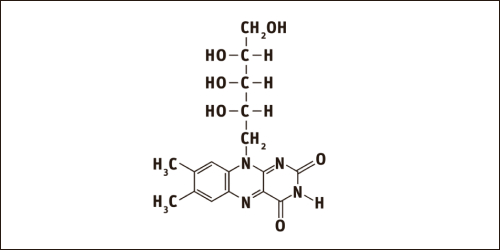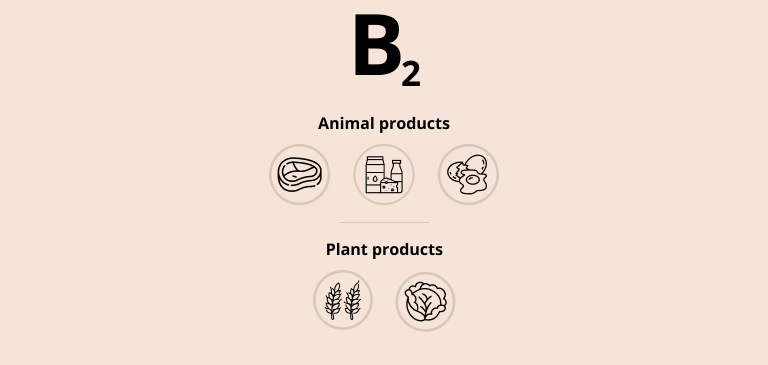Vitamin B2
Riboflavin
Year of discovery: 1922
Vitamin B2 is involved in oxidation-reduction reactions, first accepting and then donating two hydrogen molecules that are necessary to release energy from carbohydrates, fats and proteins. Vitamin B2 stimulates growth and reproduction, plays a key role in the visual system and in the conversion of B6 vitamins, folic acid and niacin into their active coenzyme forms.
Main sources of vitamin B2
Vitamin B2 can be found in offal (liver, kidney, heart), eggs, meat, milk, yogurt, cheese, whole grain cereals, dark green leafy vegetables and beer yeast.
Bioavailability of vitamin B2
Vitamin B2 is highly available from food; bile acid salts, which are released when fats are consumed, increase the rate of vitamin B2 absorption. Vitamin B2 is sensitive to light, but remains stable after heating and cooling. The milling process causes a decrease in vitamin B2 content in cereal grains.
Risks associated with insufficient intake of vitamin B2
People who mainly consume refined cereals as food, as well as the elderly, people on chronic diets and those who have excluded dairy products from their diets, are at risk of insufficient intake of this vitamin. The demand for vitamin B2 increases during periods of strong growth, such as pregnancy and lactation. Vitamin B2 deficiency co-occurs with other nutrient deficiencies and can accelerate vitamin B6 and niacin deficiencies. People with cardiovascular disease, diabetes or cancer are at risk for vitamin B2 deficiency.




